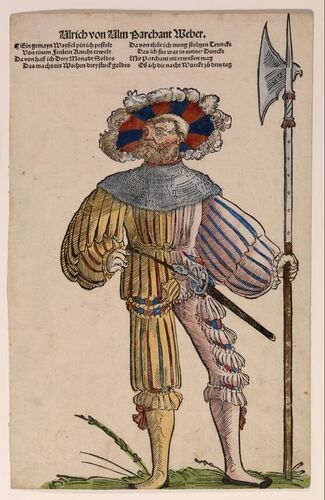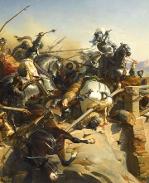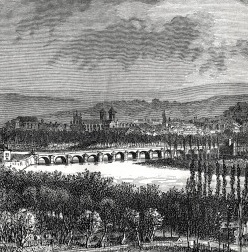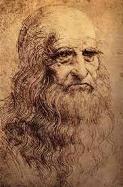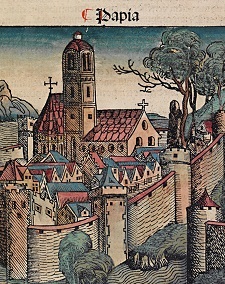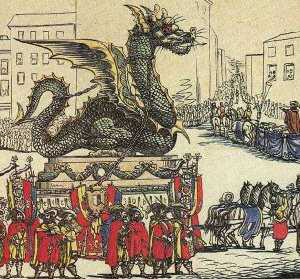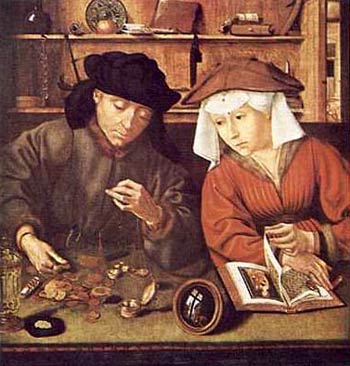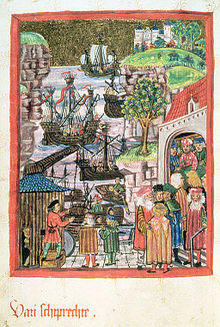historical background
Here are the frequently asked questionsabout the real people and places that feature in The Devil's Band...
WHO WERE THE LANDSKNECHTS? During the 16th Century the most feared soldiers on Europe’s battlefields were the landsknechts. These German mercenaries had such a reputation for unprincipled, ruthless violence one chronicler remarked that the devil refused to let landsknechts into hell because he was so afraid of them. This infamy was not undeserved as it was not unknown for entire regiments of landsknechts to swap sides in the middle of a battle if they were offered more money. So who were these flamboyant soldiers-of-fortune who terrorised Christendom for more than a century? Read more...
WHAT WERE THE ITALIAN WARS? The series of bloody campaigns that were fought in Italy, France and the Low Countries between 1494 to 1559 formedthe last of the great medieval conflicts that pitched Western Europe's rival dynasties against each other. In subsequent centuries, Europeans would slaughter each other in the name of religion, trade, nationalism and differing political philosophies but The Italian Wars were an inevitable product of the Feudal society that placed personal honour, prowess in war and the acquisition of territory amongst the greatest virtues. Read more...
IS THE BRIDGE OF DEATH REAL? - Two of the oldest bridges in the French city of Metz are the Pont Moyen (Middle Bridge) and the Grand Pont des Morts (Grand Bridge of the Dead) and there are several stories explaining the latter’s macabre name.
During the Middle Ages a wooden bridge connecting the city’s Isle of Chambière with the north bank of the River Moselle was built and criminals sentenced to death by drowning were hurled from its parapet. However, a more likely explanation for the name, is the strange tax imposed on Metz’s dying citizens. Read more...
WAS IT POSSIBLE TO BUILD A WORKING SUBMARINE IN THE 16TH CENTURY? In theory the answer is yes and the boat described in The Devil's Band is based on three contemporary (or near contemporary) designs. Of course, when dealing with innovative late medieval war machines, an author doesn’t need to look further than Leonardo da Vinci for inspiration and around 1515, the great polymath designed both an underwater boat, which he called ‘a ship to sink a ship’, and a diving suit to defend Venice against attacks by Turkish galleys. Read more...
WAS THE BATTLE OF PAVIA THE BATTLE THAT ENDED THE MIDDLE AGES?
In the early hours of the 24th of February 1525, a small group of Spanish sappers broke down a section of wall surrounding a deer park in Northern Italy. Moments later, an army of almost 20,000 German, Spanish and Neapolitan mercenaries, all wearing white shirts so they could tell friend from foe in the dark, began clambering through the breach and the Battle of Pavia had begun. Read more...
WHERE IS PAVIA? Pavia is in northern Italy and, though the modern city is overshadowed by its giant neighbour Milan, during its 2,234 years of existence the ancient capital of Lombardy has witnessed some of European history’s most momentous milestones. Pavia first enters recorded history in 218 BC when the Roman consul Publius Cornelius Scipio built a military camp to protect a strategic bridge over the River Ticino from the Carthaginian general Hannibal. Read more...
WHAT WAS A GRAOULLY? - In April 1546 the French writer Francois Rabelais was visiting Metz, then a free republic within the Holy Roman Empire, when he saw a crowd of children beating a huge puppet of a dragon as it was paraded through the city. This 12 foot high marionette, which was called the ‘Graoully’, was made of canvas stuffed with hay and Rabelais was so intrigued by the ceremony he included a description of it in the Fourth Book of his epic satire ‘Gargantua & Pantagruel’. Read more...
WHAT WAS THE AFFAIR OF THE GOLDSMITH'S WIFE? - After being banished from France in 1514, Richard de la Pole spent more than a decade living in Metz but his life was not that of an impoverished refugee. Having spent many years fighting for the kings of France, Richard was in receipt of a very generous annual pension of 6,000 livres, which continued to be paid despite his exile. De la Pole used this money to introduce horse racing to Metz and build a palace, La Maison Haute Pierre, where he maintained a glittering Yorkist court in exile, but around 1519 he became embroiled in a notorious scandal. Read more...
WHAT WAS THE HANSEATIC LEAGUE? Throughout the Late Medieval and Tudor periods, much of England’s trade with Northern Europe and Scandinavia was controlled by the confederation of German and Baltic ports known as the Hanseatic League. The league’s members included Cologne, Bremen, Hamburg, Lubeck and Danzig (now Gdansk) and these fiercely independent cities became so powerful that their trading stations (kontor) were given huge privileges by several English monarchs. Needless to say, their privileged status made these German merchants deeply unpopular with their English counterparts. Read more...
Most of these articles first appeared on my Facebook page, for more of my history writing go to:

